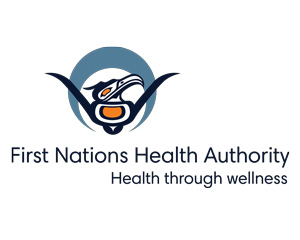There are many paths to healing and many forms of treatment for reducing or stopping harmful substance use

A message from FNHA's Mental Health and Wellness team.
When people think of “treatment" they often think only of “live-in treatment centres." In fact, “treatment centres" is one of the most-searched-for items on the FNHA website. Many people are desperate to help loved ones they see struggling, and believe treatment centres are the only option. Those who cannot go to treatment centres for various reasons, including work and family obligations, may feel discouraged.
Treatment does not necessarily mean staying in a treatment centre
The reality is that live-in treatment is a successful and supportive option for some, but is not the answer for others. The word “treatment" on its own often conjures up thoughts of having to leave home and go to a place where we work on restoring balance – physically, spiritually, mentally, and emotionally. However, only a small percentage of people (approx.16 per cent) who are experiencing problematic or harmful substance use ever step foot in a treatment centre.
For those who can or want to stay in a treatment centre, there are First Nations-operated treatment centres in BC that offer people a place to heal, learn and reflect about substance use in a culturally safe and appropriate way. These treatment centres offer services to a wide range of people and families, including cultural and clinical interventions. There are other treatment centres in the province and across Canada that also provide options.
Other forms of treatment are effective
For those who are unable to leave home or stay in a treatment facility because of family, work or other commitments, day/out-patient treatment, counselling, or self-help groups may work. This option provides the opportunity for people to remain in their day-to-day lives and/or return to family at the end of the day and practice skills they are learning while working towards their personal goals.
Note that if a person does attend a treatment centre, the work done there, while monumental, is one-step on the path towards healing. The healing journey starts whenever you're ready to take a step.
Every step taken to improve quality of life is part of the healing journey
Every action a person takes to improve their quality of life is harm reduction, whether that's reducing the amount of substance used, setting personal goals, downloading the LifeGuard app, or not using alone. Even practicing mindfulness or understanding personal triggers - how to avoid them and what to do instead - is all part of reducing harms, improving balance in your daily life, and walking the journey to health and wellness.
Understanding harmful substance use is important for healing
We can change the focus of the conversation about addiction to one of a healing journey. For some people, harmful substance use is a way to cope and heal from hurt and trauma.
The root cause of harmful substance use in individuals and communities is often unresolved historical and intergenerational trauma, grief and loss. Acknowledging how addiction can stem from physical, mental, emotional, and spiritual distress can help to dissolve the stigma associated with addiction.
Harmful substance use is part of the healing journey for some and harm reduction is how we protect people from inflicting more pain in addition to the trauma they may have already experienced.
If you have people in your life who need support, be a safe person for them to talk to about the many options available to them and keep an open mind and heart.
Remember that sometimes the most important thing we can do is reduce harm. We can actually save lives by being kind, understanding, and non-judgmental.
Helpful resources for harm reduction and caring for others and ourselves
• FNHA Fact Sheet on Indigenous Harm Reduction Principles and Practices
• FNHA's Information Page on Overdose Prevention and Harm Reduction
• FNHA Video on Taking Care of Each Other: Indigenizing Harm Reduction

